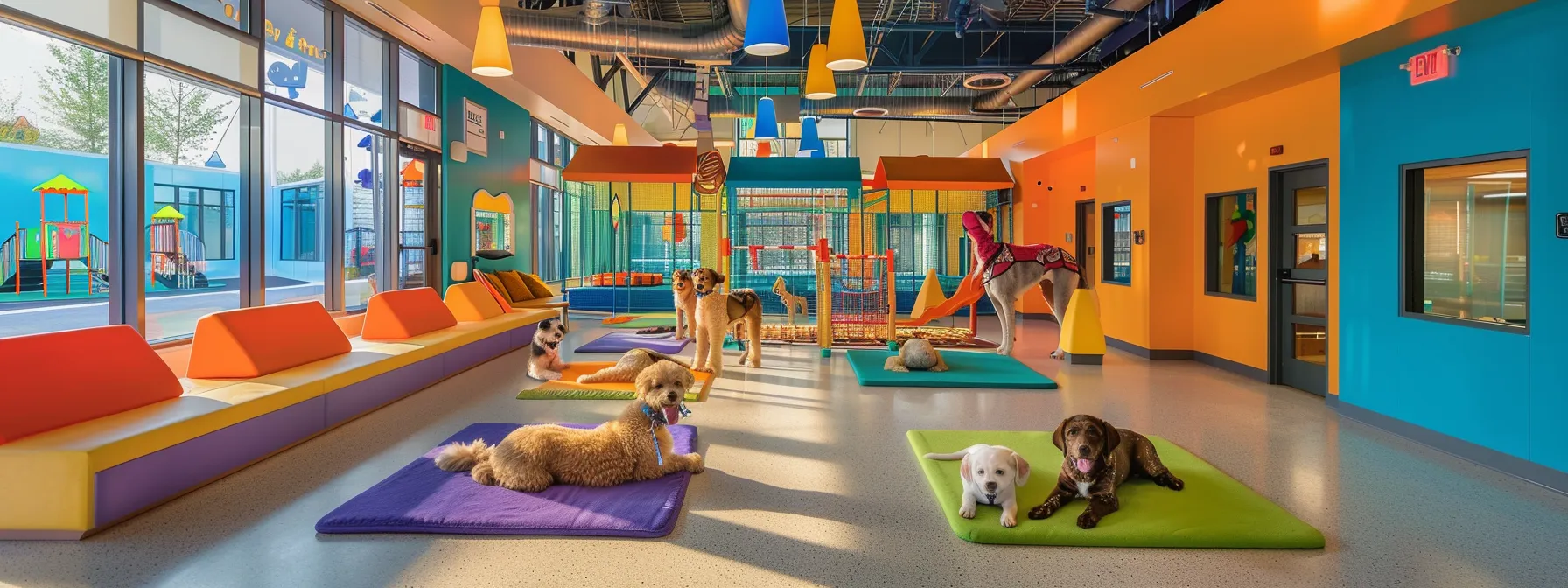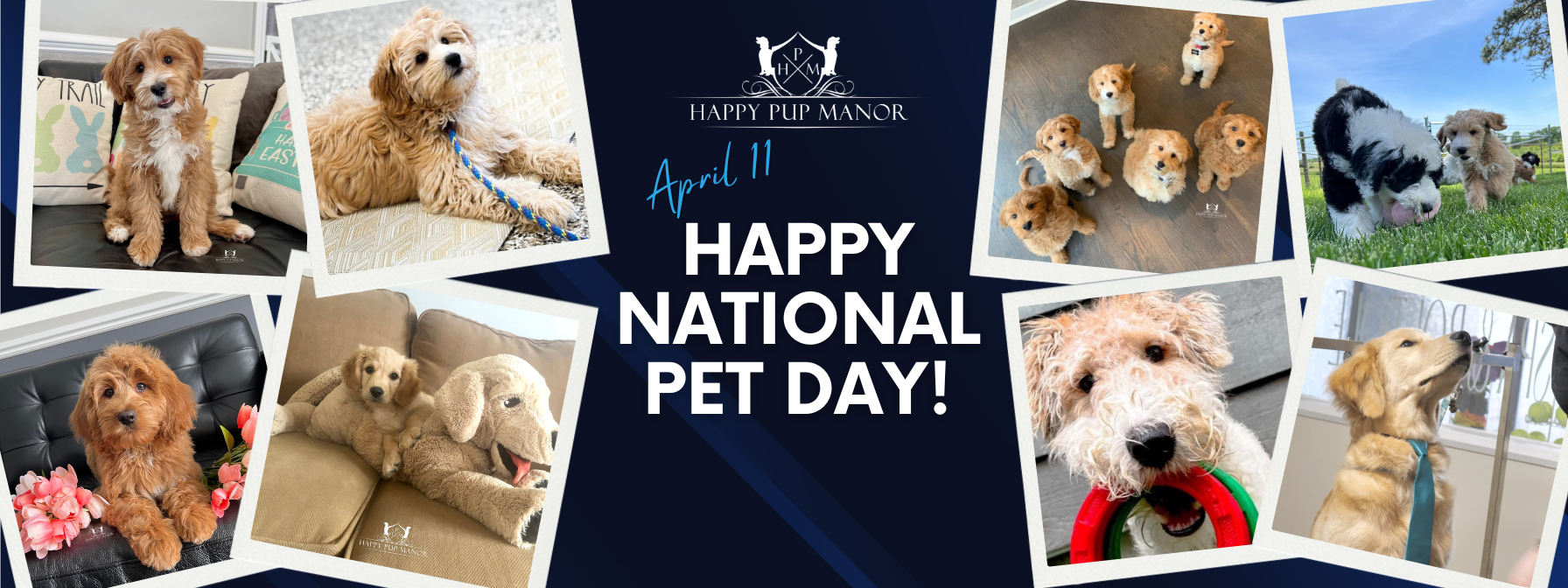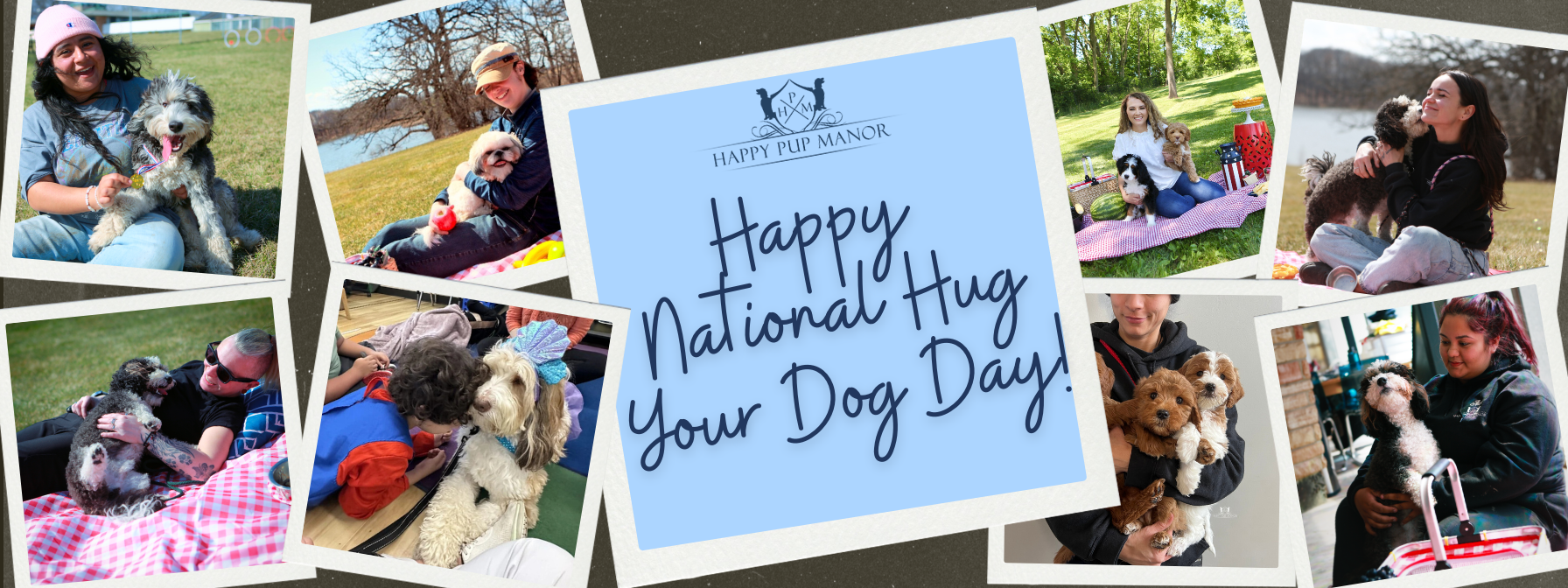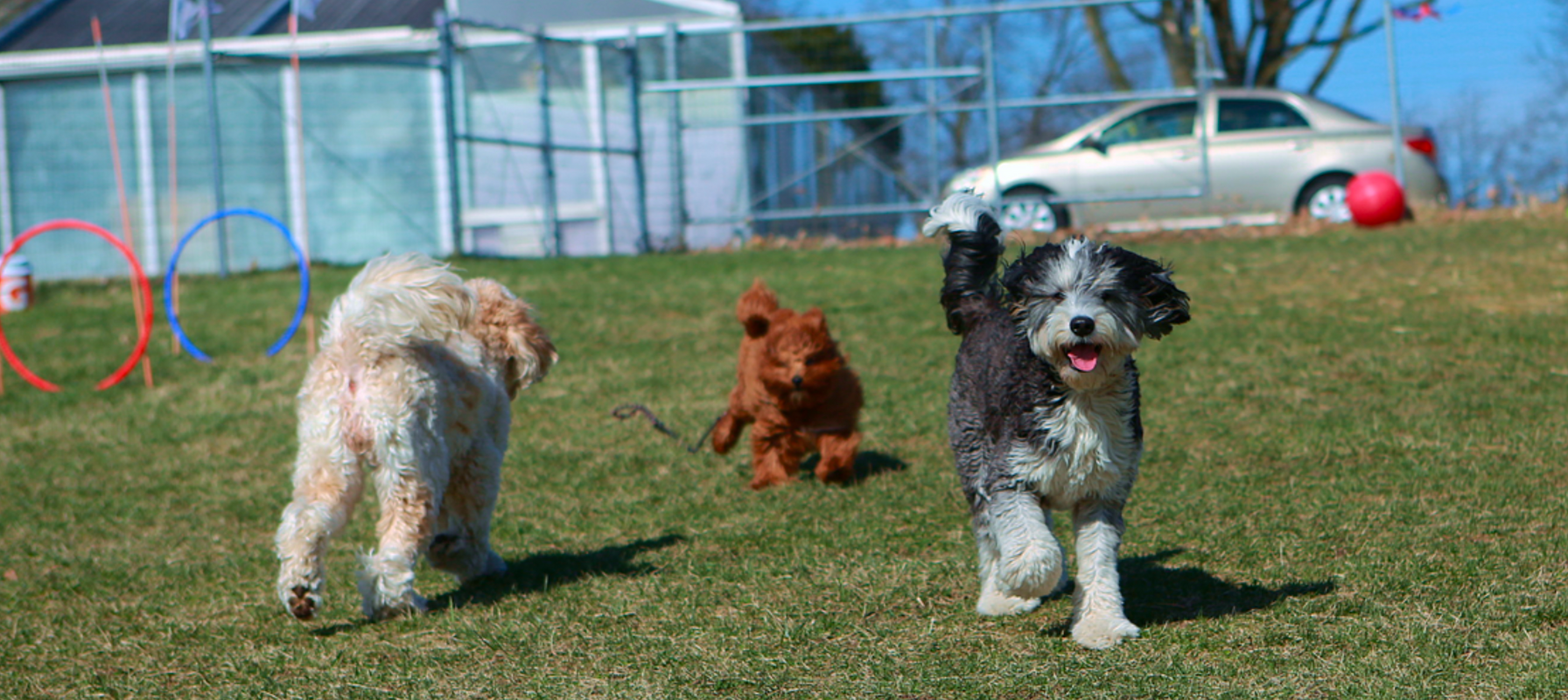Factors Contributing to a Secure Dog Boarding Experience

Factors Contributing to a Secure Dog Boarding Experience

Choosing a safe dog boarding facility is crucial for your pet’s well-being. Did you know that the right place can significantly reduce risks associated with boarding? This article will explore essential elements of safety, like staff training and secure environments. By understanding these factors, you can confidently select a facility that meets your expectations and keeps your dog protected while you’re away. Say goodbye to worries and ensure a secure stay for your furry companion.
Rigorous Staff Training and Constant Supervision Standards

Verifying staff qualifications through comprehensive background checks ensures your pet’s safety. Understanding staff-to-dog ratios allows for attentive care and recognition of canine stress signals. Continuous monitoring, day and night, along with ongoing education on dog behavior, including temperament tests, ensures a safe environment in dog boarding facilities. Each aspect contributes significantly to your pet’s well-being.
Verifying Staff Qualifications and Background Checks
At Happy Pup Manor, verifying staff qualifications through thorough background checks is a top priority for pet owners seeking safe dog daycare solutions. Understanding that emotional support animals can experience fear in new environments, we ensure our staff is trained to recognize and respond appropriately to these signals. This commitment to professionalism fosters a secure environment for all dogs in our care, enhancing their overall well-being during their stay.
Understanding Staff-to-Dog Ratios for Attentive Care
Understanding staff-to-dog ratios is essential for providing attentive care in a dog boarding facility. As a pet owner, you want to ensure that your dog receives personalized attention in a safe environment. Facilities that adhere to local regulations, such as the chicago building code, maintain proper ratios to keep dogs comfortable and reduce stress while overseeing health-related needs, including vaccinations and flea treatments to prevent emergency situations:
- Evaluate staff qualifications and experience in handling dogs.
- Check for adherence to local Chicago building codes for safety.
- Ensure proper occupational licensure documents are maintained for staff.
- Confirm that staff can recognize signs of anxiety or discomfort in pets.
- Review the facility’s policies on vaccination and flea treatments.
Continuous Monitoring Practices Day and Night
In a reputable dog boarding facility, continuous monitoring day and night ensures that your pet is always safe and comfortable. Trained staff observe canine behavior regularly, allowing for quick responses to any signs of distress. This vigilance, coupled with strict cleanliness and sanitation practices, creates a healthy environment where every dog can thrive, giving you peace of mind while you’re away.
Recognizing Canine Body Language and Stress Signals
Recognizing canine body language and stress signals is vital to the safety of dogs in boarding services. For instance, signs like tucked tails or pinned ears may indicate anxiety, while relaxed postures suggest happiness. Training staff to observe these cues enables quick action to prevent injury or discomfort, ensuring your dog feels secure during their vacation away from home.
Ongoing Education for Pet Care Professionals
Ongoing education for pet care professionals is vital in maintaining a safe dog boarding facility. Staff continue to learn about canine behavior, nutrition, and emergency procedures to ensure your dog receives perfect care, including customized meal plans tailored to individual needs. This commitment to knowledge empowers the team to handle various situations, providing peace of mind for pet owners:
- Regular workshops on canine behavior and health.
- Training in emergency response protocols.
- Updating knowledge about dietary requirements for dogs.
- Hands-on practice in handling different dog personalities.
The training of our staff ensures every moment is handled with care. Yet, it is the design of our space that keeps our dogs safe and sound, away from harm’s reach.
Designing a Secure and Hazard-Free Physical Space

Assessing perimeter fencing and entry point security is crucial for dog boarding facilities to prevent escapes and ensure safety. Using safe construction materials and maintaining kennel integrity create a trustworthy environment. Additionally, secure separation areas for different dog needs, regular facility inspections for potential dangers, and climate control systems contribute to the overall well-being of your pets. These elements are vital for a secure and comfortable stay.
Assessing Perimeter Fencing and Entry Point Security
Assessing the perimeter fencing and entry point security of a dog boarding facility is essential for keeping your pet protected. Strong, tall fences and secure gates help prevent escapes and keep unwanted animals out. Regularly inspecting these barriers ensures they remain effective, providing reassurance that your furry companion is safe during their stay.
- Ensure fencing is tall enough to deter jumping.
- Check for gaps at the base or corners to prevent escapes.
- Secure gates with reliable locks to withstand attempts to open.
- Regularly inspect the perimeter for wear or damage.
Safe Construction Materials and Kennel Integrity
Using safe construction materials and ensuring kennel integrity play a significant role in a secure dog boarding facility. Strong, durable materials help withstand wear and provide a safe environment, while well-maintained kennels prevent injury. When choosing a facility, observe their infrastructure to ensure your pet will enjoy a comforting and trustworthy space during their stay.
Secure Separation Areas for Different Dog Needs
Secure separation areas are essential in dog boarding facilities to address the varying needs of dogs based on size, temperament, and energy levels. By grouping dogs with similar characteristics, you promote a calm environment and reduce the risk of stress or injury during their stay. This thoughtful approach ensures that every dog receives the care and attention necessary for a safe and comfortable experience.
Regular Facility Inspections for Potential Dangers
Regular facility inspections are vital for identifying potential dangers in a dog boarding environment. By conducting thorough checks for hazards such as loose wires, sharp edges, or unsafe materials, you ensure a safe space for your pet. Consistent evaluation not only maintains kennel integrity but also instills confidence in pet owners, knowing that their beloved companions are well protected during their stay.
Climate Control Systems for Animal Wellbeing
Climate control systems are essential for ensuring your pet’s comfort and safety in a dog boarding facility. These systems regulate temperature and humidity, creating a stable environment that prevents overheating or chilling, which can stress your furry friend. When selecting a facility, inquire about their climate control measures to ensure your dog enjoys a pleasant stay, regardless of the weather outside.
A safe, welcoming space lays the groundwork for well-being. Next, we must turn our attention to health and cleanliness, vital for keeping that environment thriving.
Maintaining Strict Health and Cleanliness Procedures

Ensuring your pet’s health and safety in a dog boarding facility involves strict cleanliness procedures. This includes mandatory vaccination and health record policies, daily cleaning schedules, and effective disinfection methods. You’ll also find procedures for managing sick or injured dogs, safe food handling practices, and pest control measures, all vital to maintaining a secure environment for your beloved companion.
Mandatory Vaccination and Health Record Policies
Mandatory vaccination and health record policies are crucial components of a safe dog boarding facility. Ensuring that each dog has up-to-date vaccinations protects all pets from diseases that spread easily in communal environments. As a responsible pet owner, you should verify that the boarding facility maintains strict policies for health records, safeguarding your dog’s health and enhancing their overall experience during their stay.
Daily Cleaning Schedules and Disinfection Methods
In a safe dog boarding facility, daily cleaning schedules are a cornerstone of maintaining a healthy environment for your pet. This systematic approach includes thorough cleaning and disinfecting of all common areas and kennels to eliminate germs and odors. By prioritizing cleanliness, facilities help prevent the spread of illnesses, giving you peace of mind while your furry companion is in their care.
Procedures for Managing Sick or Injured Dogs
The procedures for managing sick or injured dogs in a dog boarding facility are critical to maintaining a safe environment. Trained staff should be prepared to identify symptoms of illness and take swift action, such as isolating the affected dog and contacting a veterinarian. Additionally, ensuring proper documentation and communication with pet owners helps create transparency and reassures you that your beloved companion is receiving the appropriate care.
- Prompt identification of illness symptoms
- Isolation of sick dogs for safety
- Communication with pet owners about health status
- Access to veterinary care if needed
- Thorough documentation of incidents and treatments
Safe Food Handling and Fresh Water Availability
In a safe dog boarding facility, proper food handling and fresh water availability are vital components of maintaining your pet’s health. You should ensure that staff members are trained in safe food preparation and hygiene practices to prevent contamination. Additionally, providing clean, accessible water at all times helps keep your dog hydrated, enhancing their comfort and well-being during their stay.
Pest Control Measures Within the Facility
Effective pest control measures within a dog boarding facility are essential for maintaining a healthy environment for your pet. This includes regular inspections for potential infestations and implementing preventive treatments to keep pests at bay. When selecting a facility, inquire about their pest management practices to ensure a safe and clean space for your furry friend during their stay.
With the environment clean and healthy, we turn our attention to the dogs. Here, careful interaction and playgroups thrive, crafting bonds that enhance their training and spirit.
Implementing Careful Dog Interaction and Playgroup Protocols

Thorough temperament evaluations before admission are essential for ensuring your dog’s safety in a boarding facility. Gradual introduction processes for new arrivals, along with managing playgroup sizes and dynamics, are crucial for creating a harmonious environment. Active supervision during all group activities and proactive strategies for preventing dog conflicts help maintain a secure and enjoyable experience for every pet.
Thorough Temperament Evaluations Before Admission
Thorough temperament evaluations before admission are crucial for ensuring your dog’s safety in a boarding facility. These assessments help determine your pet’s behavior, social skills, and compatibility with other dogs, allowing staff to create appropriate playgroups. By addressing individual needs and fostering suitable interactions, you can trust that your dog will enjoy a secure and positive experience during their stay:
- Conduct personality assessments to gauge behavior.
- Evaluate social skills with other dogs during the assessment.
- Determine compatibility to create safe playgroups.
- Monitor responses to different environments and stimuli.
Gradual Introduction Processes for New Arrivals
Ensuring a smooth transition for new arrivals in a dog boarding facility is essential for their comfort and safety. Gradual introduction processes allow your dog to acclimate to the environment and meet other dogs progressively. This thoughtful approach helps reduce anxiety, ensuring a positive experience while promoting healthy social interactions.
Managing Playgroup Sizes and Dynamics Safely
Managing playgroup sizes and dynamics is essential for ensuring a safe experience in a dog boarding facility. By keeping groups small and selecting dogs with compatible temperaments, staff can promote positive interactions and reduce the risk of conflicts. This tailored approach helps every dog feel comfortable and secure, addressing your concerns as a pet owner about your furry friend’s well-being during their stay.
Active Supervision During All Group Activities
Active supervision during all group activities is vital for ensuring a safe dog boarding experience. Trained staff are always present to monitor interactions, watching for signs of stress or potential conflicts among dogs. This hands-on approach not only guarantees safety but also allows for timely interventions, ensuring that every dog feels comfortable and happy throughout their stay:
- Staff actively monitor playgroups for safety.
- Immediate action is taken if stress signals are observed.
- Engaging with dogs encourages positive interactions.
- Supervision helps build trust between staff and pets.
Strategies for Preventing Dog Conflicts
Preventing dog conflicts in a boarding facility involves understanding each dog’s unique behavior and social cues. By closely monitoring interactions and facilitating gradual introductions among dogs, the risk of aggressive behavior is minimized. Engaging staff who can promptly identify and address signs of discomfort in dogs ensures a harmonious environment, allowing your pet to enjoy a safe and pleasant stay.
Dogs play well, but unpredictability can arise. Preparing for emergencies ensures everyone stays safe and ready when things go off the path.
Establishing Comprehensive Emergency Action Plans

Your dog’s safety hinges on a facility’s preparedness for emergencies. This includes clear evacuation routes for fire incidents, well-structured protocols for natural disasters and power outages, and established relationships with local veterinary services. Additionally, having staff certified in pet first aid and CPR and clear procedures for medical emergencies ensures prompt action in critical situations, keeping your pet secure and healthy.
Preparedness for Fire Incidents and Evacuation Routes
Preparedness for fire incidents is crucial for the safety of dogs in a boarding facility. Effective evacuation routes are clearly defined, enabling staff to guide pets swiftly in case of emergencies. Familiarizing staff with these plans and conducting regular drills ensures a quick response that minimizes panic and secures the well-being of your beloved pet.
- Define clear evacuation routes for fire emergencies.
- Train staff on emergency procedures.
- Conduct regular drills to ensure preparedness.
- Equip the facility with necessary fire safety equipment.
Protocols for Natural Disasters and Power Outages
In a dog boarding facility, having clear protocols for natural disasters and power outages is essential for maintaining safety and comfort. Staff should be trained to implement these plans effectively, ensuring your pet is guided calmly to secure areas in case of emergencies. Regular drills and updated contact information for local veterinary services further enhance preparedness, reassuring you that your furry friend is protected no matter the situation.
Established Relationships With Local Veterinary Services
Establishing relationships with local veterinary services is essential for ensuring your pet’s safety in a dog boarding facility. These partnerships enable quick access to medical care in emergencies, providing peace of mind for you as a pet owner. Knowing that the facility is connected with veterinary professionals who understand your dog’s specific health needs supports a safer boarding experience:
- Direct access to veterinary services for immediate medical attention.
- Collaborative care plans that consider your dog’s health history.
- Emergency protocols that include clear communication with veterinarians.
- Regular health checks and vaccinations coordinated with local vets.
Availability of Pet First Aid and CPR Certified Staff
Availability of pet first aid and CPR certified staff is a critical component in ensuring safety at a dog boarding facility. These trained professionals are equipped to respond quickly to emergencies, providing immediate care to your beloved companion if a situation arises. Knowing that there are knowledgeable staff members on site who can handle health crises gives you added peace of mind while your dog enjoys their stay:
- Trained staff can recognize symptoms of distress.
- Immediate care can prevent worsening health issues.
- Emergency protocols ensure timely access to veterinary care.
Clear Procedures for Medical Emergencies
Clear procedures for medical emergencies in a dog boarding facility are crucial for ensuring your pet’s safety. Each staff member should be trained to quickly identify and respond to health issues, minimizing delays in care. For example, having a well-marked first aid kit and a direct line to a nearby veterinarian helps facilitate prompt treatment, giving you peace of mind that your furry friend is in capable hands.
Plans are only as strong as the people behind them. Open lines of communication can turn a solid plan into successful action, ensuring everyone knows what to do when it matters most.
Ensuring Open Communication and Clear Operational Policies

Understanding a dog boarding facility’s safety hinges on open communication and clear operational policies. You’ll want to know about facility tour availability for potential clients, written safety procedures, and how updates will be provided on your pet’s status. Transparent incident reporting and consistent feedback gathering can enhance safety measures, ensuring your dog enjoys a secure and caring environment during their stay.
Facility Tour Availability for Prospective Clients
Facility tours are key for potential clients seeking safe dog boarding services. By visiting in person, you can assess the environment where your dog will stay, observe staff interactions, and ask critical questions about safety protocols. This experience not only builds trust but also ensures you’re comfortable with the facility’s operations:
- Observe the cleanliness and organization of the space.
- Meet the staff who will care for your dog.
- Assess the safety measures in place.
- Check for proper play areas and housing conditions.
Written Policies on Safety and Care Procedures
Written policies on safety and care procedures are crucial for maintaining clear communication within a dog boarding facility. As a pet owner, you deserve to know how your dog will be cared for, including safety protocols and emergency procedures. By reviewing these policies, you ensure that the facility takes your beloved companion’s safety seriously, fostering confidence in the care your dog will receive during their stay.
Methods for Providing Updates to Pet Owners
In a safe dog boarding facility, keeping pet owners informed is vital for peace of mind. Facilities should use various methods to provide updates, such as phone calls, text messages, or even an online portal where you can check on your dog’s status. This transparency not only enhances your confidence in the care your pet receives but also fosters a strong relationship between you and the boarding staff.
- Regular phone calls with updates on your dog’s wellbeing.
- Text messages for quick check-ins during stays.
- Online portals for secure access to health and activity logs.
- Photo updates showcasing fun moments during playtime.
Transparent Incident Reporting Process
A transparent incident reporting process is vital in ensuring that you feel secure about your dog’s stay at a boarding facility. When incidents occur, facilities must communicate promptly and clearly, explaining what happened and how they addressed the situation. This level of openness fosters trust, allowing you to confidently leave your pet in their care:
- Maintain regular communication about your pet’s status.
- Provide immediate notification of any incidents.
- Document incidents thoroughly and transparently.
- Share action steps taken for recovery or improvement.
Gathering Feedback for Continuous Safety Improvements
Gathering feedback from pet owners is essential for continuous safety improvements in a dog boarding facility. By actively seeking your thoughts and experiences, staff can identify areas that need enhancement, whether in communication, cleanliness, or overall care protocols. This open dialogue not only builds trust but ensures that your dog’s safety and comfort remain the top priority during their stay.
Conclusion
A safe dog boarding facility prioritizes rigorous staff training, continuous monitoring, and secure environments to ensure your pet’s well-being. By verifying staff qualifications and maintaining appropriate staff-to-dog ratios, facilities can provide attentive care tailored to each dog’s needs. Implementing clear emergency protocols and open communication with pet owners enhances trust and transparency. Ultimately, choosing the right facility guarantees a comfortable and secure experience for your furry companion.










